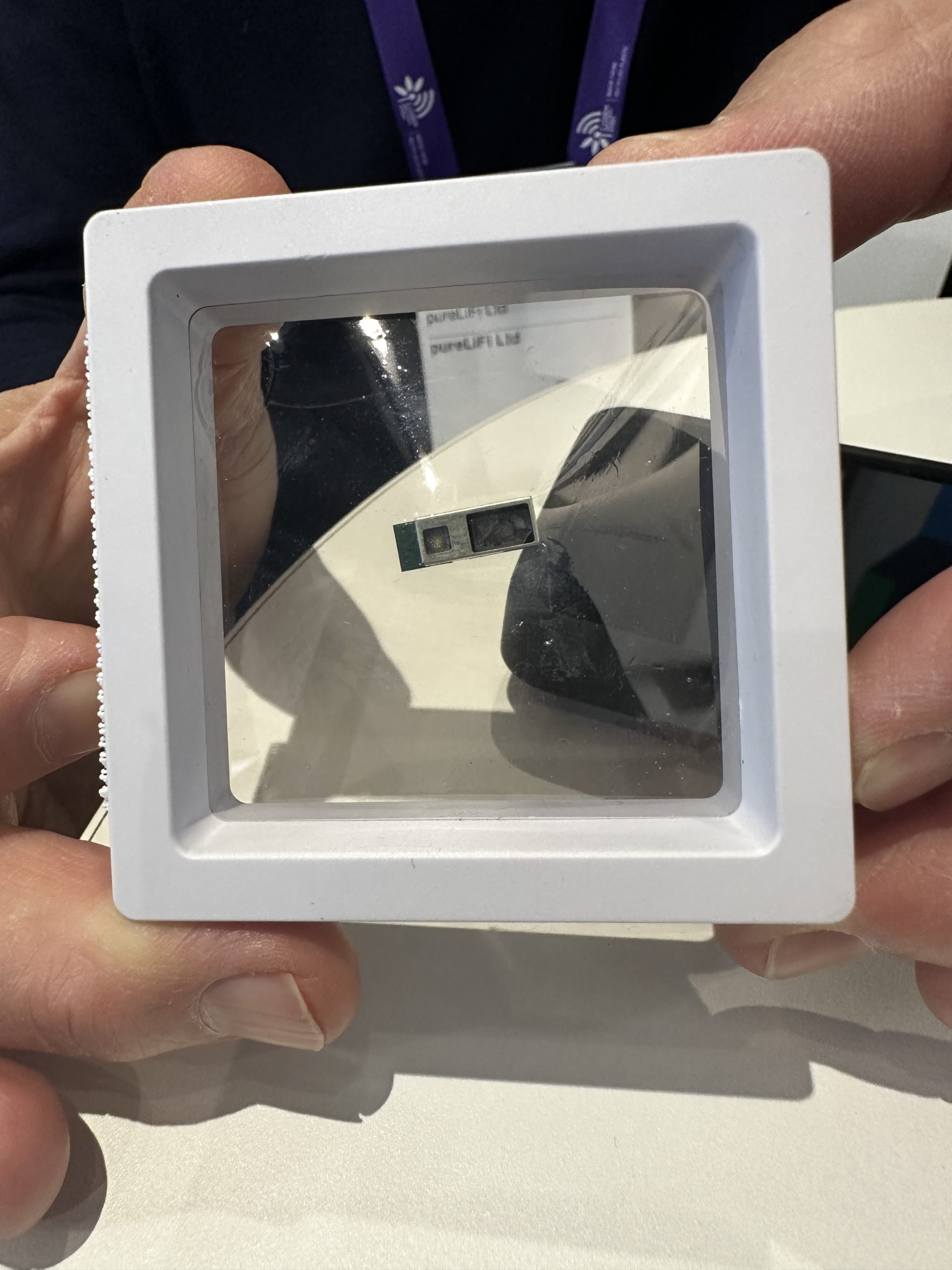Data transmissions using light or LiFi has already taken off with military use. Now developer PureLiFi wants to bring it to consumers.
CEO Alistair Banham, a semiconductor industry veteran, says PureLifi makes use of the massive visible light spectrum to transmit data as you would with WiFi. And there’s plenty of spectrum available to do so. “The light spectrum is 2600 times larger than the RF (radio frequency) spectrum,” he says.
Mr Banham spoke to ChannelNews Australia at the Mobile World Congress mobile and telecommunications conference in Barcelona.
He says data transmission over light is fast thanks to the bandwidth available. You can use a transceiver or transmission/receiver devices to send and receive data. Mr Banham says PureLifi is working with “multiple phone companies” to implement transmission using phones.
“I have seen a phone with one of our transmitters in where they’ve been testing it. So it’s only a matter of time before this technology becomes pervasive,” he says.
A transmission has to be line-of-sight. LiFi transmissions, like light, don’t travel through walls.
You might see this as a bad idea. Why not just stick with the devil we know and use WiFi for transmitting data?
Mr Banham says the ample availability of spectrum means you don’t have a congestion issue. LiFi networks can be integrated with a standard radio frequency WiFi network to service hundreds of connected devices, an advantage that should make them popular in a business environment, as well as at home.

The biggest advantage, however, is security. LiFi networks can be confined to a single room and, when it comes to defence situations, are not detectable from afar. Mr Banham says military organisations in the US, UK and NATO were using LiFi in the field.
“We’ve been working with the defence companies globally, for about the last five or six years,” he says. “They’re already deploying LiFi systems, in use cases for the army, and the marines.
“If you do it today with RF (radio frequency WiFi), it lights up. It has an electromagnetic footprint, so it radiates so someone looking down from space can see it.
“The CTO of the US Army in Europe said: ‘Alistair, LiFi saves lives because it’s not detectable and you can’t jam it. It doesn’t pass through the tent wall, so you can’t pick it up outside’.”
“So it’s very secure. it’s very secure. From a logistics perspective, you don’t have to carry lots of cables to connect it and set it up.”
Mr Banham says a series of consumer technology makers are evaluating LiFi for use within their products. He expects LiFi to roll out in the home initially as a series of hotspots, such as bedrooms, or around a TV.
Eventually the world will run out of bandwidth unless another data transmission technology is brought online.
“According to Ericsson, 84 exabytes of mobile data is transmitted every month around this world, and that is growing. By 2028-29, you’re not going to have bandwidth to support the amount of mobile. You need another bearer, and light is that bearer.”
PureLiFi has produced a “LiFi Cube” for consumers that you can mount on your desk and connect to you computer. Peripherals can be added wirelessly. “You’ll have a secure network to work on that no one can detect.”
Mr Banham says there are situations you may want to transmit power as well as data. He says PureLiFi has been working with Solace to provide that. The solution includes transferring power and light through glass. It eliminates a more complex installation through a wall, as typical networks have.
Published by ChannelNews Australia, February 28, 2024.
